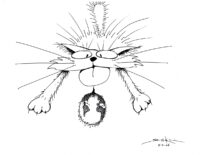While humans prepare for cold weather, deer have something else in mind when temperatures drop. Cold weather signifies mating season for deer, and they become more active, aggressive and a greater threat to humans, pets and landscapes. Here are six facts you should know:
• During mating season, deer are intensely foraging and seeking mates. Bucks become particularly aggressive and can seriously injure – or even kill – pets and people. They also become a traffic danger crossing streets and roads.
• In cold weather, food is harder to find, and deer become much bolder, looking for food closer and closer to your backyard. Their foraging can cause significant damage to trees, shrubs, and garden beds. Deer can eat 10 pounds of food a day – half a ton over their lifetime.
• Deer move freely through suburban landscapes when temperatures drop because they have no natural predators – other than humans – in suburbia. In the wild, predators serve as natural population control
• In addition to the damage deer can cause to your yard and the dangers of encountering them on the road, deer also carry parasites that can harm people. The ticks that carry Lyme disease live on deer, and proximity to deer can increase your exposure.
• Fence them out? You probably can’t build one high enough: deer can jump eight feet, higher than the typical fence of five or six feet. One answer: a topical spray with natural but taste and scent-aversion ingredients to repel deer from ornamental plantings, shrubs and trees. These are effective without posing danger to plants, pets and humans.
• Deer are smarter than many people give them credit for. They quickly learn where to find easy food sources. Unless they are given a reason to change their browsing trail, they will continue to visit your yard.






Be First to Comment